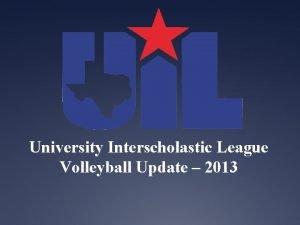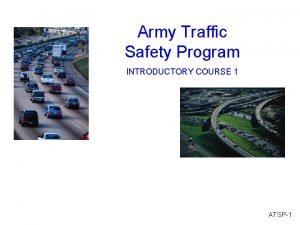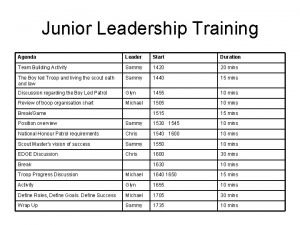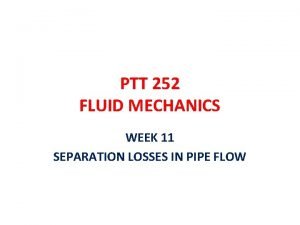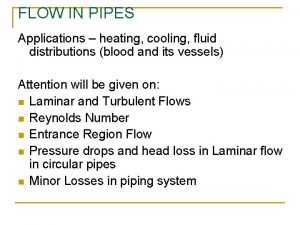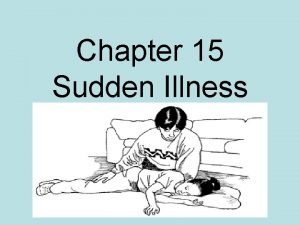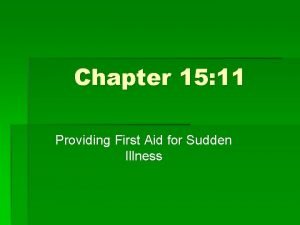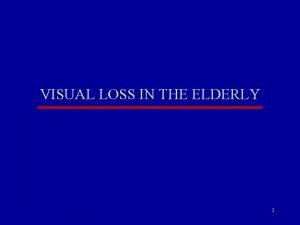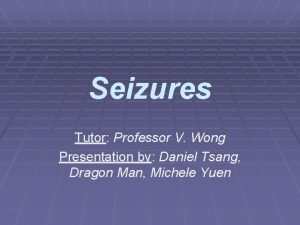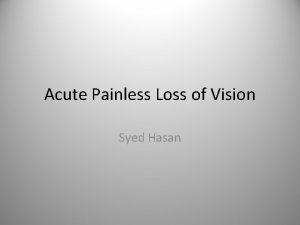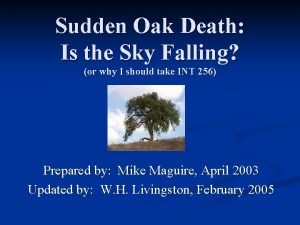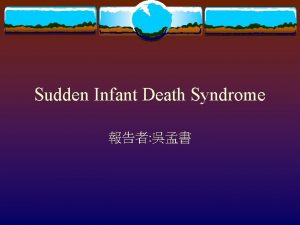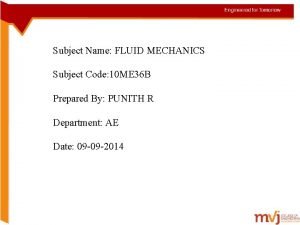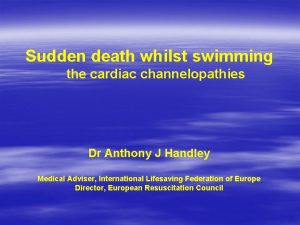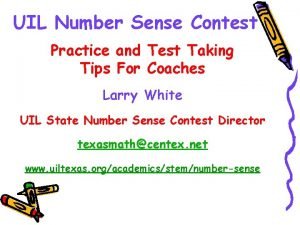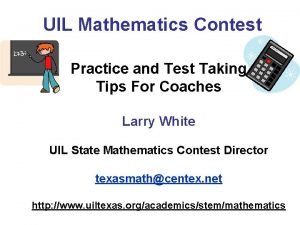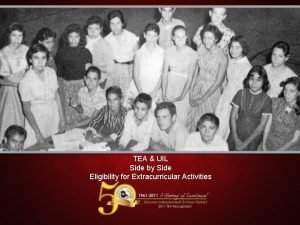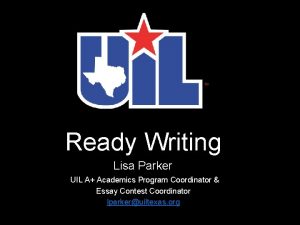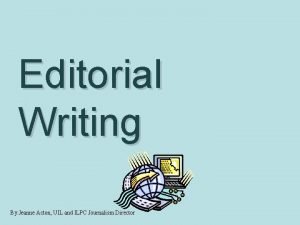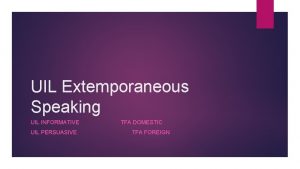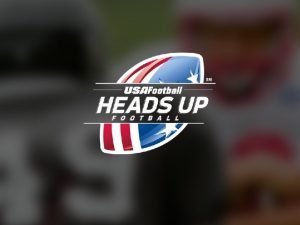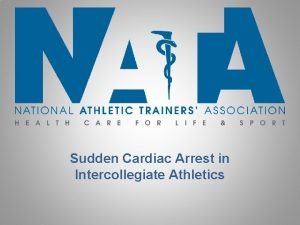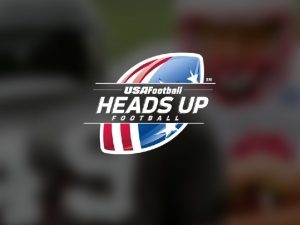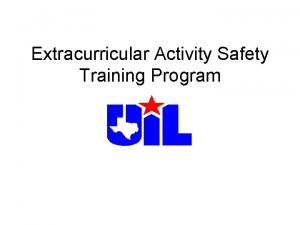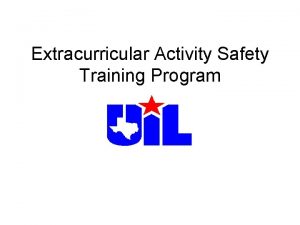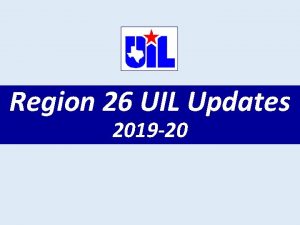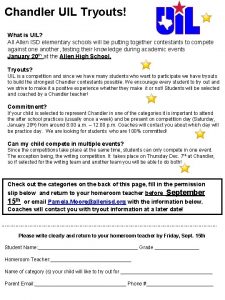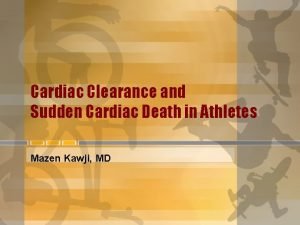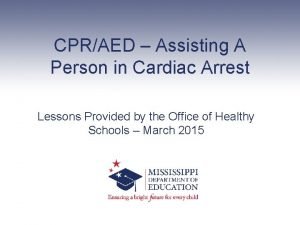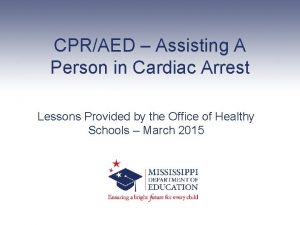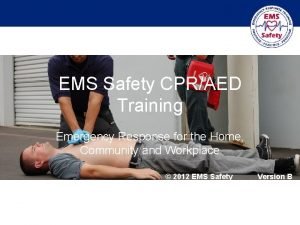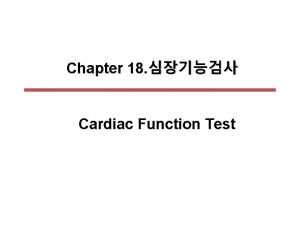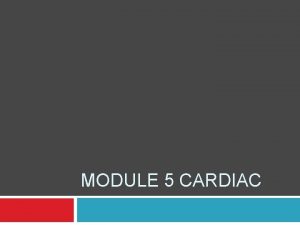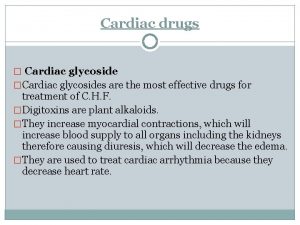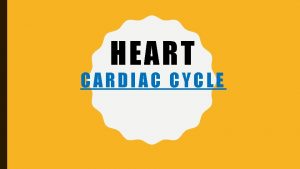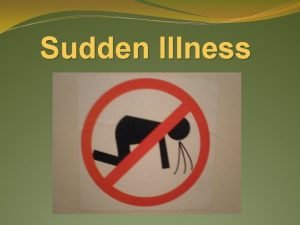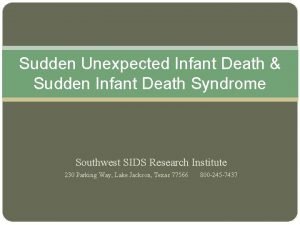UIL SAFETY TRAINING PROGRAM AGENDA CPRAED Sudden Cardiac












































- Slides: 44

UIL SAFETY TRAINING PROGRAM

AGENDA Ø Ø Ø Ø Ø CPR/AED Sudden Cardiac Arrest Head and Neck Injuries Concussions Heat Hydration Asthma Anabolic Steroids & Nutritional Supplements Lightning Safety Communicable Diseases

SECTION 1 CPR/AED Sudden Cardiac Arrest

KEY CPR COMPONENTS • Compression Rate – at least 100/min (to the beat of Bee Gees song Stayin’ Alive) • Minimize interruptions in Compressions (< 10 sec) • If AED present – Compressions must be performed before and after a shock

SUDDEN CARDIAC AWARENESS INFORMATION What is Sudden Cardiac Arrest? • Occurs suddenly and often without warning. • An electrical malfunction (short-circuit) causes the bottom chambers of the heart (ventricles) to beat dangerously fast (ventricular tachycardia or fibrillation) and disrupts the pumping ability of the heart. • The heart cannot pump blood to the brain, lungs and other organs of the body. • The person loses consciousness (passes out) and has no pulse. • Death occurs within minutes if not treated immediately.

SUDDEN CARDIAC AWARENESS INFORMATION What causes Sudden Cardiac Arrest? Conditions present at birth • Inherited (passed on from parents/relatives) conditions of the heart muscle: • Hypertrophic Cardiomyopathy – hypertrophy (thickening) of the left ventricle; the most common cause of sudden cardiac arrest in athletes in the U. S. • Arrhythmogenic Right Ventricular Cardiomyopathy – replacement of part of the right ventricle by fat and scar; the most common cause of sudden cardiac arrest in Italy. • Marfan Syndrome – a disorder of the structure of blood vessels that makes them prone to rupture; often associated with very long arms and unusually flexible joints. • Inherited conditions of the electrical system: • Lonq QT Syndrome – abnormality in the ion channels (electrical system) of the heart. • Catecholaminergic Polymorphic Ventricular Tachycardia and Brugada Syndrome – other types of electrical abnormalities that are rare but run in families. • Non-Inherited (not passed on from the family, but still present at birth) conditions: • Coronary Artery Abnormalities – abnormality of the blood vessels that supply blood to the heart muscle. The second most common cause of sudden cardiac arrest in athletes in the U. S. • Aortic valve abnormalities – failure of the aortic valve (the valve between the heart and the aorta) to develop properly; usually causes a loud heart murmur. • Non-compaction Cardiomyopathy – a condition where the heart muscle does not develop normally. • Wolff-Parkinson-White Syndrome –an extra conducting fiber is present in the heart’s electrical system and can increase the risk of arrhythmias.

SUDDEN CARDIAC AWARENESS INFORMATION What causes Sudden Cardiac Arrest? (continued) • • Conditions not present at birth but acquired later in life: – Commotio Cordis – concussion of the heart that can occur from being hit in the chest by a ball, puck, or fist. – Myocarditis – infection/inflammation of the heart, usually caused by a virus. – Recreational/Performance-Enhancing drug use. Idiopathic: Sometimes the underlying cause of the Sudden Cardiac Arrest is unknown, even after autopsy. What are the symptoms/warning signs of Sudden Cardiac Arrest? • • Fainting/blackouts (especially during exercise) Dizziness Unusual fatigue/weakness Chest pain Shortness of breath Nausea/vomiting Palpitations (heart is beating unusually fast or skipping beats) Family history of sudden cardiac arrest at age < 50 **ANY of these symptoms/warning signs that occur while exercising may necessitate further evaluation from your physician before returning to practice or a game.

SUDDEN CARDIAC AWARENESS INFORMATION What is the treatment for Sudden Cardiac Arrest? • Time is critical and an immediate response is vital. • CALL 911 • Begin CPR • Use an Automated External Defibrillator (AED) What are ways to screen for Sudden Cardiac Arrest? • The American Heart Association recommends a pre-participation history and physical including 14 important cardiac elements. • The UIL Pre-Participation Physical Evaluation – Medical History form includes ALL 14 of these important cardiac elements and is mandatory annually. • Additional screening using an electrocardiogram and/or an echocardiogram is readily available to all athletes, but is not mandatory.

SECTION 2 Head and Neck Injuries Concussions

REDUCING HEAD AND NECK INJURIES • Complete preseason physical exams and medical histories for all participants in accordance with established rules. Identify during the physical exam those athletes with a history of previous head or neck injuries. If the physician has any questions about the athlete's readiness to participate, the athlete should not be allowed to play. • A physician should be present at all games. If it is not possible for a physician to be present at all games and practice sessions, emergency measures must be provided. The total staff should be organized in that each person will know what to do in case of head or neck injury in a game or practice. Have a plan ready and have your staff prepared to implement that plan. Prevention of further injury is the main objective. • Coaches and officials should discourage the players from using their heads as battering rams. The rules prohibiting spearing and helmet-to-helmet contact should be enforced in practice and in games. The players should be taught to respect the helmet as a protective device and that the helmet should not be used as a weapon.

REDUCING HEAD AND NECK INJURIES • Coaches should drill the athletes in the proper execution of the fundamentals of football skills, particularly blocking and tackling. Keep the head out of football! • All coaches, physicians, and trainers should take special care to see that each player's equipment is properly fitted, particularly the helmet. • Strict enforcement of the rules of the game by both coaches and officials may help reduce serious injuries. • When a player has experienced or shown signs of head trauma (loss of consciousness, visual disturbances, headache, inability to walk correctly, obvious disorientation, memory loss) they should receive immediate medical attention and should not be allowed to return to practice or game without permission from the proper medical authorities.

DEFINITION OF CONCUSSION There are numerous definitions of concussion available in medical literature as well as in the previously noted “guidelines” developed by the various state organizations. The feature universally expressed across definitions is that concussion 1) is the result of a physical, traumatic force to the head and 2) that force is sufficient to produce altered brain function which may last for a variable duration of time. For the purpose of this program the definition presented in Chapter 38, Sub Chapter D of the Texas Education Code is considered appropriate: "Concussion" means a complex pathophysiological process affecting the brain caused by a traumatic physical force or impact to the head or body, which may: (A) include temporary or prolonged altered brain function resulting in physical, cognitive, or emotional symptoms or altered sleep patterns; and (B) involve loss of consciousness.

CONCUSSION SYMPTOMS & SIGNS Concussion can produce a wide variety of symptoms that should be familiar to those having responsibility for the well being of student-athletes engaged in competitive sports in Texas. Symptoms reported by athletes may include: headache; nausea; balance problems or dizziness; double or fuzzy vision; sensitivity to light or noise; feeling sluggish; feeling foggy or groggy; concentration or memory problems; confusion. Signs observed by parents, friends, teachers or coaches may include: appears dazed or stunned; is confused about what to do; forgets plays; is unsure of game, score or opponent; moves clumsily; answers questions slowly; loses consciousness; shows behavior or personality changes; can’t recall events prior to hit; can’t recall events after hit. Any one or group of symptoms may appear immediately and be temporary, or delayed and long lasting. The appearance of any one of these symptoms should alert the responsible personnel to the possibility of concussion.

CONCUSSION OVERSIGHT TEAM Concussion Oversight Team (COT): According to TEC Section 38. 153: ‘The governing body of each school district and open-enrollment charter school with students enrolled who participate in an interscholastic athletic activity shall appoint or approve a concussion oversight team. Each concussion oversight team shall establish a return-to-play protocol, based on peer-reviewed scientific evidence, for a student's return to interscholastic athletics practice or competition following the force or impact believed to have caused a concussion. ’ According to TEC Section 38. 154: CONCUSSION OVERSIGHT TEAM: MEMBERSHIP. (a) Each concussion oversight team must include at least one physician and, to the greatest extent practicable, considering factors including the population of the metropolitan statistical area in which the school district or openenrollment charter school is located, district or charter school student enrollment, and the availability of and access to licensed health care professionals in the district or charter school area, must also include one or more of the following: (1) an athletic trainer; (2) an advanced practice nurse; (3) a neuropsychologist; or (4) a physician assistant. (b) If a school district or open-enrollment charter school employs an athletic trainer, the athletic trainer must be a member of the district or charter school concussion oversight team. (c) Each member of the concussion oversight team must have had training in the evaluation, treatment, and oversight of concussions at the time of appointment or approval as a member of the team. ’

RESPONSE TO SUSPECTED CONCUSSION According to section 38. 156 of the Texas Education Code (TEC), a student ‘shall be removed from an interscholastic athletics practice or competition immediately if one of the following persons believes the student might have sustained a concussion during the practice or competition: (1) a coach; (2) a physician; (3) a licensed health care professional; or (4) the student's parent or guardian or another person with legal authority to make medical decisions for the student. ’ If a student-athlete demonstrates signs or symptoms consistent with concussion, follow the “Heads Up” 4 -Step Action Plan: • The student-athlete shall be immediately removed from game/practice as noted above. • Have the student-athlete evaluated by an appropriate health care professional as soon as practicable. • Inform the student-athletes parent or guardian about the possible concussion and give them information on concussion. • If it is determined that a concussion has occurred, the student-athlete shall not be allowed to return to participation that day regardless of how quickly the signs or symptoms of the concussion resolve and shall be kept from activity until a physician indicates they are symptom free and gives clearance to return to activity as described below. A coach of an interscholastic athletics team may not authorize a student’s return to play.

RETURN TO ACTIVITY/PLAY FOLLOWING CONCUSSION According to section 38. 157 of the Texas Education Code (TEC): ‘A student removed from an interscholastic athletics practice or competition under TEC Section 38. 156 (suspected of having a concussion) may not be permitted to practice or compete again following the force or impact believed to have caused the concussion until: (1) the student has been evaluated; using established medical protocols based on peerreviewed scientific evidence, by a treating physician chosen by the student or the student's parent or guardian or another person with legal authority to make medical decisions for the student; (2) the student has successfully completed each requirement of the return-to-play protocol established under TEC Section 38. 153 necessary for the student to return to play; (3) the treating physician has provided a written statement indicating that, in the physician's professional judgment, it is safe for the student to return to play; and

RETURN TO ACTIVITY/PLAY FOLLOWING CONCUSSION (4) the student and the student's parent or guardian or another person with legal authority to make medical decisions for the student: (A) have acknowledged that the student has completed the requirements of the return-to-play protocol necessary for the student to return to play; (B) have provided the treating physician's written statement under Subdivision (3) to the person responsible for compliance with the return-to-play protocol under Subsection (c) and the person who has supervisory responsibilities under Subsection (c); and (C) have signed a consent form indicating that the person signing: (i) has been informed concerning and consents to the student participating in returning to play in accordance with the return-to-play protocol; (ii) understands the risks associated with the student returning to play and will comply with any ongoing requirements in the return-to-play protocol; (iii) consents to the disclosure to appropriate persons, consistent with the Health Insurance Portability and Accountability Act of 1996 (Pub. L. No. 104 -191), of the treating physician's written statement under Subdivision (3) and, if any, the return-to-play recommendations of the treating physician; and (iv) understands the immunity provisions under TEC Section 38. 159. ’

GUIDELINES FOR SAFELY RESUMING PARTICIPATION • TEC section 38. 155 requires the UIL to provide guidelines for safely resuming participation in an athletic activity following a concussion. TEC 38. 153 indicates that: ‘Each concussion oversight team shall establish a return-to-play protocol, based on peerreviewed scientific evidence, for a student's return to interscholastic athletics practice or competition following the force or impact believed to have caused a concussion. ’ • A student athlete, if it is believed that they might have sustained a concussion, shall not return to practice or competition until the student athlete has been evaluated and cleared in writing by his or her treating physician and all other notice and consent requirements have been met. From that point, the student athlete must satisfactorily complete the protocol established by the school district’s or charter school’s Concussion Oversight Team. • The current ‘peer reviewed scientific evidence’ suggests that, after complying with the clearance, notice and consent requirements noted above, a ‘step-by-step’ return to play protocol that includes a progressive exercise component is indicated for high school participants.

WHO IS RESPONSIBLE? At every activity under the jurisdiction of the UIL in which the activity involved carries a potential risk for concussion, there should be a designated individual who is responsible for identifying student-athletes with symptoms of concussion injuries. That individual should be a physician or an advanced practice nurse, athletic trainer, neuropsychologist, or physician assistant, as defined in TEC section 38. 151, with appropriate training in the recognition and management of concussion in athletes. In the event that such an individual is not available, a supervising adult approved by the school district with appropriate training in the recognition of the signs and symptoms of a concussion in athletes could serve in that capacity. When a licensed athletic trainer is available such an individual would be the appropriate designated person to assume this role. The individual responsible for determining the presence of the symptoms of a concussion is also responsible for creating the appropriate documentation related to the injury event.

Potential Need For School/Academic Adjustments & Modification Following Concussion (Return To Learn) It may be necessary for individuals with concussion to have both cognitive and physical rest in order to achieve maximum recovery in shortest period of time. In addition to the physical management noted above, it is recommended that the following be considered: • Notify school nurse and all classroom teachers regarding the student-athlete’s condition. • Advise teachers of post concussion symptoms. • Student may need (only until asymptomatic) special accommodations regarding academic requirements (such as limited computer work, reading activities, testing, assistance to class, etc. ) until concussion symptoms resolve. • Student may only be able to attend school for half days or may need daily rest periods until symptoms subside. In special circumstances the student may require homebound status for a brief period.

CONCUSSION ACKNOWLEDGEMENT FORM According to section 38. 155 of the Texas Education Code, 'a student may not participate in an interscholastic athletic activity for a school year until both the student and the student ’s parent or guardian or another person with legal authority to make medical decisions for the student have signed a form for that school year that acknowledges receiving and reading written information that explains concussion prevention, symptoms, treatment, and oversight and that includes guidelines for safely resuming participation in an athletic activity following a concussion…. . ’ This form is available for download on the UIL web site. Concussion Acknowledgement Form

CONCUSSION TRAINING FOR COACHES AND ATHLETIC TRAINERS HB 2038 as passed by the 82 nd Legislature and signed by the Governor also added section 38. 158 to the Texas Education Code, which concerns training requirements for coaches, athletic trainers and potential members of a Concussion Oversight Team in the subject matter of concussions, including evaluation, prevention, symptoms, risks, and long-term effects. For purposes of compliance with TEC section 38. 158, the UIL authorizes all Continuing Professional Education (CPE) providers that are approved and registered by the State Board for Educator Certification (SBEC) and Texas Education Agency (TEA) as approved individuals and organizations to provide concussion education training. A current listing of approved providers is found on the TEA web site and is also linked from the UIL web site. Note: Coaches must complete a total of two hours to fulfill the requirement. This may be in one session or multiple sessions. The coach must provide proper documentation of attendance to the ISD superintendent or the individual designated by the ISD superintendent. Two hours of concussion education training is required every two years and must be completed no later than September 1 and each subsequent two-year period.

SECTION 3 Heat, Hydration and Asthma

HEAT ACCLIMATIZATION AND HEAT ILLNESS Exertional Heatstroke (EHS) is the leading cause of preventable death in high school athletics. Students participating in high-intensity, long-duration or repeated same-day sports practices and training activities during the summer months or other hot-weather days are at greatest risk. Football has received the most attention because of the number and severity of exertional heat illnesses. Notably, the National Center for Catastrophic Sports Injury Research reports that 58 high school football players died of EHS between 1995 and 2017. EHS also results in thousands of emergency room visits and hospitalizations throughout the nation each year. Heat Acclimatization and Safety Priorities: • Recognize that EHS is the leading preventable cause of death among high school athletes. • Know the importance of a formal pre-season heat acclimatization plan. • Know the importance of having and implementing a specific hydration plan, keeping your athletes well -hydrated, and encouraging and providing ample opportunities for regular fluid replacement. • Know the importance of appropriately modifying activities in relation to the environmental heat stress and contributing individual risk factors (e. g. , illness, obesity) to keep your athletes safe and performing well. • Know the importance for all members of the coaching staff to closely monitor all athletes during practice and training in the heat, and recognize the signs and symptoms of developing heat illnesses. • Know the importance of, and resources for, establishing an emergency action plan and promptly implementing it in case of suspected EHS or other medical emergency.

FUNDAMENTALS OF A HEAT ACCLIMATIZATION • Physical exertion and training activities should begin slowly and continue progressively. An athlete cannot be “conditioned” in a period of only two to three weeks. • Keep each athlete’s individual level of conditioning and medical status in mind adjust activity accordingly. These factors directly affect exertional heat illness risk. • Adjust intensity (lower) and rest breaks (increase frequency/duration), and consider reducing uniform and protective equipment, while being sure to monitor all players more closely as conditions are increasingly warm/humid, especially if there is a change in weather from the previous few days. • Athletes must begin practices and training activities adequately hydrated. • Recognize early signs of distress and developing exertional heat illness, and promptly adjust activity and treat appropriately. First aid should not be delayed! • Recognize more serious signs of exertional heat illness (clumsiness, stumbling, collapse, obvious behavioral changes and/or other central nervous system problems), immediately stop activity and promptly seek medical attention by activating the Emergency Medical System. On-site rapid cooling should begin immediately. • An Emergency Action Plan with clearly defined written and practiced protocols should be developed and in place ahead of time.

HYDRATION TIPS AND FLUID GUIDELINES Many athletes do not voluntarily drink enough water to prevent significant dehydration during physical activity. Drink regularly throughout all physical activities. An athlete cannot always rely on his or her sense of thirst to sufficiently maintain proper hydration. Drink before, during, and after practices and games. For example: • Drink 16 ounces of fluid 2 hours before physical activity. • Drink another 8 to 16 ounces 15 minutes before physical activity. • During physical activity, drink 4 to 8 ounces of fluid every 15 to 20 minutes (some athletes who sweat considerably can safely tolerate up to 48 ounces per hour). • After physical activity, drink 16 to 20 ounces of fluid for every pound lost during physical activity to achieve normal hydration status before the next practice or competition.

RECOMMENDATIONS FOR HYDRATION WHAT NOT TO DRINK DURING EXERCISE Fruit juices with greater than 8 percent carbohydrate content and carbonated soda can both result in a bloated feeling and abdominal cramping. Athletes should be aware that nutritional supplements are not limited to pills and powders as many of the new “energy” drinks contain stimulants such as caffeine and/or ephedrine. • These stimulants may increase the risk of heat illness and/or heart problems with exercise. They can also cause anxiety, jitteriness, nausea, and upset stomach or diarrhea. • Many of these drinks are being produced by traditional water, soft drink and sports drink companies which can cause confusion in the sports community. As is true with other forms of supplements, these "power drinks”, “energy drinks”, or “fluid supplements" are not regulated by the FDA. Thus, the purity and accuracy of contents on the label is not guaranteed. • Many of these beverages which claim to increase power, energy, and endurance, among other claims, may have additional ingredients that are not listed. Such ingredients may be harmful and may be banned by governing bodies like the NCAA, USOC, or individual state athletic associations.

RECOMMENDATIONS FOR HYDRATION WHAT TO DRINK DURING EXERCISE For most exercising athletes, water is appropriate and sufficient for pre-hydration and rehydration. Water is quickly absorbed, well-tolerated, an excellent thirst quencher and cost-effective. Traditional sports drinks with an appropriate carbohydrate and sodium formulation may provide additional benefit in the following general situations: • Prolonged continuous or intermittent activity of greater than 45 minutes • Intense, continuous or repeated exertion • Warm-to-hot and humid conditions Traditional sports drinks with an appropriate carbohydrate and sodium formulation may provide additional benefit for the following individual conditions: • Poor hydration prior to participation • A high sweat rate or “salty sweater” • Poor caloric intake prior to participation • Poor acclimatization to heat and humidity A 6 to 8% carbohydrate formulation is the maximum that should be utilized in a sports drink. Any greater concentration will slow stomach emptying and potentially cause the athlete to feel bloated. An appropriate sodium concentration (0. 4– 1. 2 grams per liter) will help with fluid retention and distribution and decrease the risk of exertional muscle cramping.

ASTHMA AND EXERCISE Coaches, athletic trainers and other health care professionals should • Be aware of the major signs and symptoms of asthma, such as coughing, wheezing tightness in the chest, shortness of breath and breathing difficulty at night, upon awakening in the morning or when exposed to certain allergens or irritants. • Devise an asthma action plan for managing and referring athletes who may experience significant or life threatening attacks, or breathing difficulties. • Have pulmonary function measuring devices, such as peak expiratory flow meters (PFMs), at all athletic venues, and be familiar with how to use them. • Encourage well-controlled asthmatics to engage in exercise to strengthen muscles, improve respiratory health and enhance endurance and overall well being. • Refer athletes with atypical symptoms; symptoms that occur despite proper therapy; or other complications that can exacerbate asthma (e. g. sinusitis, nasal polyps, severe rhinitis, gastroesophageal reflux disease [GERD] or vocal cord dysfunction), to a physician with expertise in asthma. They include allergists, ear, nose and throat physicians, cardiologists and pulmonologists trained in providing care for athletes.

ASTHMA AND EXERCISE • Consider providing alternative practice sites for athletes with asthma. Indoor practice facilities that offer good ventilation and air conditioning should be taken into account for at least part of the practice. • Encourage players with asthma to have follow-up examinations at regular intervals with their primary care physician or specialist. These evaluations should be scheduled at least every six to 12 months. • Identify athletes with past allergic reactions or intolerance to aspirin or nonsteroidal anti-inflammatory drugs (NSAIDs), and provide them with alternative medicines, such as acetaminophen. • Be aware of websites that provide general information on asthma and exercise induced asthma. These sites include: the American Academy of Allergy, Asthma and Immunology – www. aaaai. org; the American Thoracic Society – www. thoracic. org; the Asthma and Allergy Foundation of America – www. aafa. org; and the American College of Allergy, Asthma & Immunology – www. acaai. org

SECTION 4 Anabolic Steroids and Nutritional Supplements

ILLEGAL STEROID USE AND RANDOM ANABOLIC STEROID TESTING • Texas state law prohibits possessing, dispensing, delivering or administering a steroid in a manner not allowed by state law. • Texas state law also provides that bodybuilding, muscle enhancement or the increase in muscle bulk or strength through the use of a steroid by a person who is in good health is not a valid medical purpose. • Texas state law requires that only a medical doctor may prescribe a steroid for a person. • Any violation of state law concerning steroids is a criminal offense punishable by confinement in jail or imprisonment in the Texas Department of Criminal Justice. • As a prerequisite to participation in UIL athletic activities, student-athletes must agree that they will not use anabolic steroids as defined in the UIL Anabolic Steroid Testing Program Protocol and that they understand that they may be asked to submit to testing for the presence of anabolic steroids in their body. Additionally, as a prerequisite to participation in UIL athletic activities, student-athletes must agree to submit to such testing and analysis by a certified laboratory if selected.

HEALTH CONSEQUENCES ASSOCIATED WITH ANABOLIC STEROID ABUSE • Boys and Men - reduced sperm production, shrinking of the testicles, impotence, difficulty or pain in urinating, baldness, and irreversible breast enlargement (gynecomastia). • Girls and Women - development of more masculine characteristics, such as decreased body fat and breast size, deepening of the voice, excessive growth of body hair, and loss of scalp hair. • Adolescents of both sexes - premature termination of the adolescent growth spurt, so that for the rest of their lives, abusers remain shorter than they would have been without the drugs. • Males and females of all ages - potentially fatal liver cysts and liver cancer; blood clotting, cholesterol changes, and hypertension, each of which can promote heart attack and stroke; and acne. Although not all scientists agree, some interpret available evidence to show that anabolic steroid abuse-particularly in high doses-promotes aggression that can manifest itself as fighting, physical and sexual abuse, armed robbery, and property crimes such as burglary and vandalism. Upon stopping anabolic steroids, some abusers experience symptoms of depressed mood, fatigue, restlessness, loss of appetite, insomnia, reduced sex drive, headache, muscle and joint pain, and the desire to take more anabolic steroids. • In injectors, infections resulting from the use of shared needles or non-sterile equipment, including HIV/AIDS, hepatitis B and C, and infective endocarditis, a potentially fatal inflammation of the inner lining of the heart. Bacterial infections can develop at the injection site, causing paid and abscess.

NUTRITIONAL / DIETARY SUPPLEMENTS • The contents and purity of nutritional/dietary supplements are NOT tested closely or regulated by the Food and Drug Administration (FDA). • As such, UIL is making student athletes and parents aware of the possibility of supplement contamination and the potential effect on a student athletes’ steroid test. UIL does not approve or disapprove supplements. • Contaminated supplements could lead to a positive steroid test. The use of supplements is at the student-athlete’s own risk. Student-athletes and interested individuals with questions or concerns about these substances should consult their physician for further information. • Student athletes must be aware that they are responsible for everything they eat, drink and put into their body. Ignorance and/or lack of intent are not acceptable excuses for a positive steroid test result. • The American College of Cardiology recommends that "Athletes should have their nutritional needs met through a healthy balanced diet without dietary supplements".

SECTION 5 Lightning Safety

RECOMMENDATIONS FOR LIGHTNING SAFETY • Establish a chain of command that identifies who is to make the call to remove individuals from the field. • Name a designated weather watcher (A person who actively looks for the signs of threatening weather and notifies the chain of command if severe weather becomes dangerous). • Have a means of monitoring local weather forecasts and warnings. • Designate a safe shelter for each venue. See examples below. • When thunder is heard within 30 seconds of a visible lightning strike, or a cloud-toground lightning bolt is seen, the thunderstorm is close enough to strike your location with lightning. Suspend play for thirty minutes and take shelter immediately. • Once activities have been suspended, wait at least thirty minutes following the last sound of thunder or lightning flash prior to resuming an activity or returning outdoors.

RECOMMENDATIONS FOR LIGHTNING SAFETY • Avoid being the highest point in an open field, in contact with, or proximity to the highest point, as well as being on the open water. Do not take shelter under or near trees, flagpoles, or light poles. • Assume that lightning safe position (crouched on the ground weight on the balls of the feet, feet together, head lowered, and ears covered) for individuals who feel their hair stand on end, skin tingle, or hear "crackling" noises. Do not lie flat on the ground. • Observe the following basic first aid procedures in managing victims of a lightning strike: * Activate local EMS * Lightning victims do not "carry a charge" and are safe to touch. * If necessary, move the victim with care to a safer location. * Evaluate airway, breathing, and circulation, and begin CPR if necessary. * Evaluate and treat for hypothermia, shock, fractures, and/or burns. • All individuals have the right to leave an athletic site in order to seek a safe structure if the person feels in danger of impending lightning activity, without fear of repercussions or penalty from anyone.

RECOMMENDATIONS FOR LIGHTNING SAFETY Safe Shelter- • A safe location is any substantial, frequently inhabited building. The building should have four solid walls (not a dug out), electrical and telephone wiring, as well as plumbing, all of which aid in grounding a structure. • The secondary choice for a safer location from the lightning hazard is a fully enclosed vehicle with a metal roof and the windows completely closed. It is important to not touch any part of the metal framework of the vehicle while inside it during ongoing thunderstorms. • It is not safe to shower, bathe, or talk on landline phones while inside of a safe shelter during thunderstorms (cell phones are ok).

SECTION 6 Communicable Diseases

COMMUNICABLE DISEASE PROCEDURES Universal Hygiene Protocol for All Sports • Shower immediately after all competition and practice • Wash all workout clothing after practice • Wash personal gear (knee pads and braces) weekly. • Do not share towels or personal hygiene products (razors) with others. • Refrain from full body (chest, arms, abdomen) cosmetic shaving.

COMMUNICABLE DISEASE PROCEDURES Means of reducing the potential exposure to Infectious Skin Diseases include- • Athletes must be told to notify a parent or guardian, athletic trainer and coach of any skin lesion prior to any competition or practice. An appropriate healthcare professional should evaluate any skin lesion before returning to competition. • If an outbreak occurs on a team, especially in a contact sport, all team members should be evaluated to help prevent the potential spread of the infection. • Coaches, officials, and appropriate health-care professionals must follow NFHS or state/local guidelines on “time until return to competition. ” Participation with a covered lesion may be considered if in accordance with NFHS, state or local guidelines and the lesion is no longer contagious.

COMMUNICABLE DISEASE PROCEDURES Means of reducing the potential exposure to Blood-Borne Infectious Diseases include: • An athlete who is bleeding, has an open wound, has any amount of blood on his/her uniform or has blood on his/her person, shall be directed to leave the activity until the bleeding is stopped, the wound is covered, the uniform and/or body is appropriately cleaned and/or the uniform is changed before returning to activity. • Certified athletic trainers or caregivers need to wear gloves and take other precautions to prevent blood-splash from contaminating themselves or others. • Immediately wash contaminated skin or mucous membranes with soap and water. • Clean all contaminated surfaces and equipment with disinfectant before returning to competition. Be sure to use gloves with cleaning. • Any blood exposure or bites to the skin that break the surface must be reported and evaluated by a medical provider immediately.

COMMUNICABLE DISEASE PROCEDURES • The risk for blood-borne infectious diseases, such as HIV/Hepatitis B, remains low in sports and to date has not been reported. • Proper precautions are needed to minimize the potential risk of spreading these diseases. • In addition to these diseases that can be spread through transmission of bodily fluids only, skin infections that occur due to skin contact with competitors and equipment deserve close oversight, especially considering the emergence of the potentially more serious infection with Methicillin-Resistant Staphylococcus Aureus (MRSA).

RESOURCES • American College of Cardiology • California Interscholastic Federation • National Athletic Trainers Association • National Federation of State High School Associations • National Institute on Drug Abuse • Syracuse University • Texas Education Agency • University Interscholastic League • Google Images
 Safety care behavioral safety training
Safety care behavioral safety training Agenda sistemica y agenda institucional
Agenda sistemica y agenda institucional Uil volleyball rules
Uil volleyball rules Army traffic safety training program
Army traffic safety training program Leadership training agenda
Leadership training agenda Sudden successive flights of bullets
Sudden successive flights of bullets Sudden oak death map
Sudden oak death map Gradual contraction loss coefficient
Gradual contraction loss coefficient Head loss formula for sudden contraction
Head loss formula for sudden contraction Chapter 17:2 performing cardiopulmonary resuscitation
Chapter 17:2 performing cardiopulmonary resuscitation Sudden illness definition
Sudden illness definition Chapter 17:11 providing first aid for sudden illness
Chapter 17:11 providing first aid for sudden illness The valve closure in a pipe is said to be sudden when
The valve closure in a pipe is said to be sudden when The sudden release of energy stored in rocks causes a(n)
The sudden release of energy stored in rocks causes a(n) English 9 vocabulary unit 1
English 9 vocabulary unit 1 Sudden fiction meaning
Sudden fiction meaning Yaş 35 dante
Yaş 35 dante Sudden painless loss of vision
Sudden painless loss of vision Ahsan mukhtar
Ahsan mukhtar Sudden attack projetista
Sudden attack projetista Leda and the swan allusion
Leda and the swan allusion Amiodrone
Amiodrone Refers
Refers Sudden oak death map
Sudden oak death map Sudden light by dante gabriel rossetti
Sudden light by dante gabriel rossetti Livedo mortis
Livedo mortis Fluid mechanics subject code
Fluid mechanics subject code Sudden syllable structure
Sudden syllable structure Sudden death proc
Sudden death proc Where do you activate the four shades function
Where do you activate the four shades function Personal safety vs process safety
Personal safety vs process safety Safety assessment for ind safety reporting
Safety assessment for ind safety reporting 00101-15 basic safety
00101-15 basic safety Basic safety construction site safety orientation
Basic safety construction site safety orientation Region 6 music
Region 6 music Uil math number sense
Uil math number sense Uil calculator practice tests with answers
Uil calculator practice tests with answers Tea uil side by side
Tea uil side by side Uil music forms
Uil music forms Ready writing uil prompts
Ready writing uil prompts Uil prose and poetry categories
Uil prose and poetry categories Uil meaning in middle school
Uil meaning in middle school Uil literary criticism study guide
Uil literary criticism study guide What is uil in elementary school
What is uil in elementary school Jeanne acton
Jeanne acton


